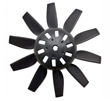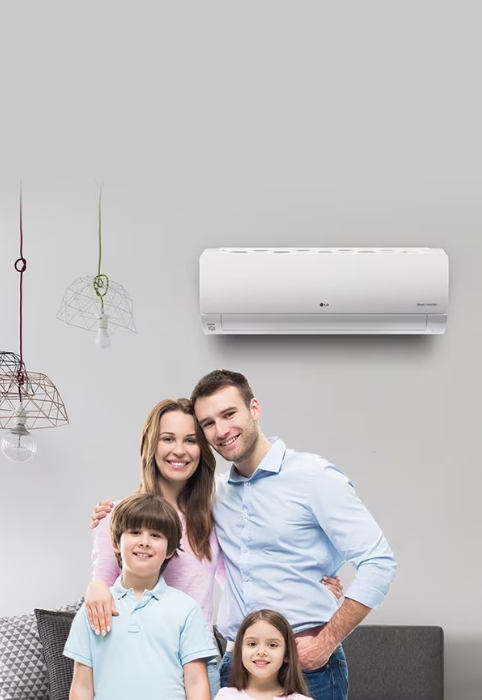Knowing how your Air Conditioning system components works
A split air conditioning (AC) system composes of different parts that make it work accordingly. The air conditioning system components are grouped into two separate systems: the indoor and the outdoor system. Each system consists of one or two major parts and auxiliary parts while the control components are part of the indoor system.
The Control Parts of a Split Air Conditioning

The damper controls the temperature of the refrigerant vapor by varying the duct openings. On the other hand, the humidistat detects humidity level in the air and aids the thermostat how much work does the AC need to do to maintain a comfortable temperature. Some ACs does not contain humidistat. If an AC contains a humidifier, expect an added purchasing cost compared to a non-humidifier AC.
The Air Conditioning System Components of the Indoor System
The major indoor system components consist of an evaporator, a cooling fan, and a drainpipe. The indoor system is the low-pressure side of the entire cooling system. The evaporator is in the form of coiled tubes. It absorbs heat from the room, sending the heated air to the tubes of the compressor, condenser and expansion valve back to the evaporator. As the name suggests, the evaporator turns the refrigerant liquid into gas. The evaporator consists of cooling fans. The cooling fan blows cooling air into the room and at the same time sucks the hot air out of the room.
The Air Conditioning System Components of the Outdoor System
The major parts of the outdoor system are the compressor, condenser, condenser fans, and expansion valve. Their general function is to compress and condense air and bring that cooled air back to the inside of the house. The outdoor system is the high-pressure side of the entire AC unit. The outdoor system is the heat exchange system, where the AC unit removes the heat before the air goes back to the room.
Compressor
This major part of the air conditioning system components circulates the refrigerant vapor by compressing and reducing its volume using high temperature before sending the vapor to the condenser. There are five types of compressor used in an air conditioning system: the reciprocating, centrifugal, screw, scroll and rotary. The type of compressor used in an air conditioning unit depends on the load the AC requires to cool a room and on the size of the cooling system. Usually, the centrifugal are used in a larger cooling system while the four types are mostly seen on residential, smaller AC unit.
Condenser
The condenser converts the high-pressure refrigerant vapor from the compressor into a liquid. It removes some of the heat from the vapor and releases it to the expansion valve. The condenser looks like an engine radiators with hundreds or thousands of coils. The size of the condenser depends on the size of the compressor and the AC unit.
Condenser Fans
Once the condenser removes the heat from the refrigerant vapor, the condenser fans expel the excess heat out of the outdoor system. Otherwise, the heat goes back to the compressor which may cause overheating, reducing the overall efficiency of the air conditioning system components.
Expansion Valve
From the condenser, the refrigerant liquid passes through the expansion valve. The liquid that goes to the valve is still warm. Thus, the function of the valve is to lower the pressure of the refrigerant liquid, thereby, lowering its temperature. After the process, the low-pressure refrigerant liquid goes to the evaporator coils.
Other essential Air Conditioning System Components
Refrigerant
It is a liquid inside the coils, which enables the air conditioning unit to pressurize and condense the vapor. It contains a small amount of lubricating oil, enough to make the refrigeration cycle works especially to the compressor. For an efficient refrigerant, it has a lower boiling point than the air temperature in the evaporator and has a higher temperature than the maximum vapor temperature in the compressor. It is non flammable and nontoxic.
Tubes and Tube Insulation
Aside from the condenser and evaporator coils, the AC unit has tubes that connect the two systems. The refrigerant liquid passes through these tubes. In order to maintain the temperature of this liquid, the tubes are insulated with synthetic rubber.
Air Filter
Located in the indoor system, the filter cleans the air that passes through the evaporator coil. It traps dust and odor before the cooling air enters the room. It is disposable or reusable. You can clean it once a month or have a technician do the work for you.
Muffler
It reduces the noise created by the compressor. It cancels out sound waves. In some cases, a muffler is unnecessary when the compressor produces sounds that are not within hearing level or the outdoor component is small. Usually, a muffler is present on larger AC units, when the type of compressor has many mechanical mechanisms that make the compressor noisier as it pressurizes air.
Casing and Casing parts
These are final additions to the overall appearance of the air conditioning unit. These casing parts protect the air conditioning unit from outside elements such as dirt, dust, and weather condition.
Drainpipe
The drainpipe drains excess liquid after condensation of the air inside the coils. Sometimes, this pipe is connected to your plumbing or drainage system, especially in a ducted split system or centralized air conditioning system. It keeps the condenser at its top condition by removing the excess water during condensation. An air conditioning unit is a system with many simple air conditioning system components. Without one component, the AC unit will not operate efficiently and effectively. When one component is defective, it does not affect the whole system entirely. In most cases, other parts still work even if one component is defective. However, the air conditioning unit does not cool your house, which is its main purpose. If you encounter problems that are hard to pinpoint, just call a technician to inspect your AC unit.







